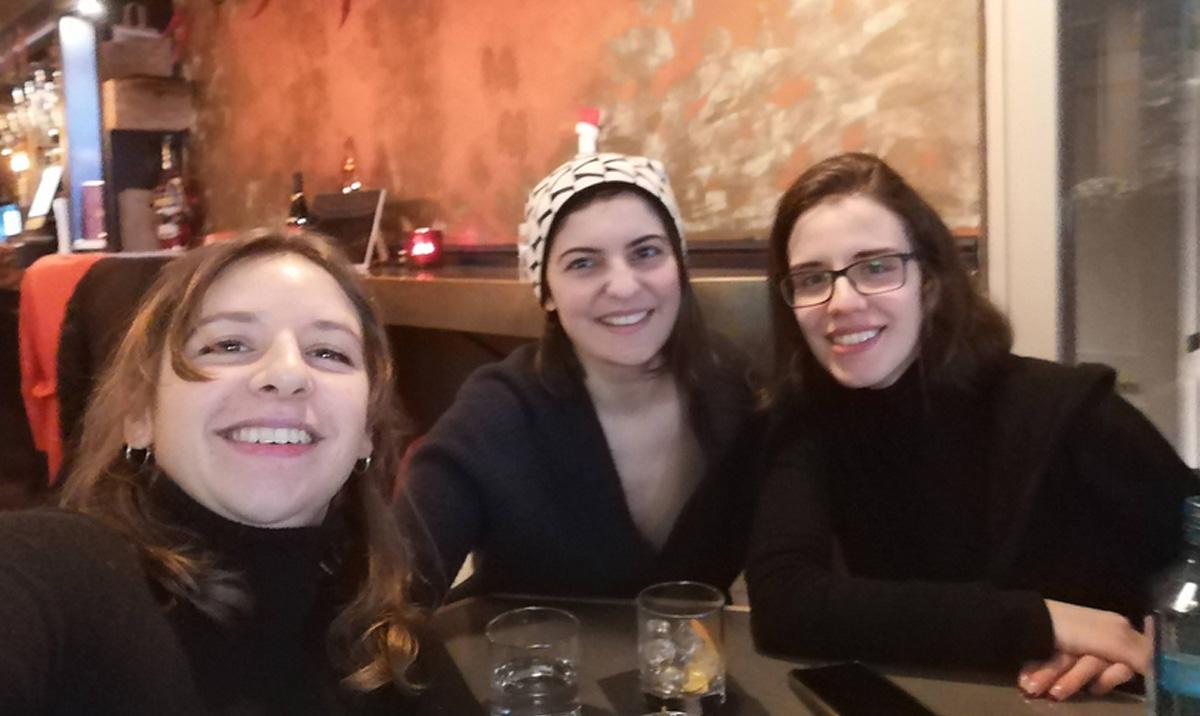HPC-Europa visit report
23 February 2022
Tamara Gerber, a PhD student at the institute for Physics of Ice, Climate and Earth at the University of Copenhagen, reports on her research visits to Edinburgh and Newcastle.
In my PhD I am studying the mechanisms of ice flow in the Northeast Greenland Ice Stream – a ‘river of ice’ which drains into the Arctic ocean and substantially contributes to the mass loss of the Greenland ice sheet. Together with many international collaborators we are trying to understand why and how the ice is moving so fast in that particular area, how long this ice stream has already been there and how it will evolve in the future.
One important source of information is a deep – more than 2 km long – ice core, which is at the moment being drilled in the onset region of the ice stream. Ice cores archive old snow layers turned into ice and allow us to look backwards in time and reconstruct past climate variations, but they also give insight into physical properties like temperatures, impurities, or the size and orientation of individual ice crystals. These properties depend on the ice flow history but also affect the ‘softness’ of the ice and thus play an important role in ice deformation. Ice cores are, however, limited in being point-measurements and the huge logistical costs of such drilling operations make it impossible to drill many ice cores. We therefore need to use additional methods to extend the information of ice physics on larger scales.
Radio-echo-sounding is a standard method used in glaciology because it allows to efficiently ‘scan’ glaciers and ice sheets, for instance to map the ice thickness. Electromagnetic waves that are transmitted at the ice surface or from an aircraft travel through the subsurface and are reflected when the dielectric properties change. The dielectric characteristics of ice are linked to physical properties, such as impurity layers, air bubbles or the orientation of ice crystals, and so, radar measurements bear the potential to derive information on the physical characteristics of ice. Being an indirect geophysical method, the interpretation of radargrams requires an extensive understanding of radar wave propagation.
Numerical modeling is an excellent tool to simulate the propagation and reflection of radar waves in different subsurface scenarios and allow to generate synthetic radargrams from theoretical ice properties. GprMax is an open-source code for simulating radar waves using the FDTD method which I stumbled across some time ago. In the frame of the HPC Europa programme, I was able to visit Craig Warren and Antonis Giannopoulos, two of the developers of gprMax, in Newcastle and Edinburgh, respectively. The access to HPC facilities allowed me to reproduce a synthetic radargram using the dielectric properties measured in the ice core. By means of sensitivity studies I could determine the physical origin, the depth and age of radar reflections and found that often a single distinguished peak in the electrical conductivity caused by e.g. volcanic eruptions leads to reflections, but that often one ‘reflector’ is caused through interference of multiple smaller peaks. Discussions with Craig and Antonis also greatly helped me to tackle some of my more challenging ideas such as studying the effect of rough and folded interfaces. Due to the large size of these problems access to HPC facilities was highly appreciated.
Sitting in an office in the engineering department gave me the opportunity of meeting other scientists with different background than myself and gain new perspectives on my work. Nevertheless, Craig and Antonis did a great job in introducing me to the local glaciology groups, where I followed group meetings and talks, met fellow polar researchers for coffee and had the opportunity to present and discuss my work with them. I experienced these encounters as particularly valuable as comparable opportunities earlier in my PhD were very rare due to the pandemic.
As this was my first longer visit to the UK, I did not miss the chance to explore some of the culture and nature. Lewis, my lovely flatmate in Newcastle, showed me the beauty of Northumberland and his family welcomed me at their house in the countryside as if I was part of them. I tried to make myself useful by helping to pamper horse Alfie, who had unfortunately a slightly injured leg. I also visited beautiful York and the coastline south of the Tyne and made friends while dancing Salsa. In Edinburgh I stayed with Philippos, the owner of the beautiful cafè ‘Lady and the Bear’ and his flatmate Irene. Pierre, my officemate was so friendly he loaned me his old bike and he was a great companion for a hiking trip in the Highlands and a bike tour along the coastline. I couldn’t resist going on a four-day trip to the Highlands in Loch Lomond National Park before heading back to flat Denmark. The stunning views in Glencoe, a cosy cabin in Crianlarich, and a fun hitchhike back were absolutely worth it.
Image shows Tamara (left) with friends in Edinburgh.

